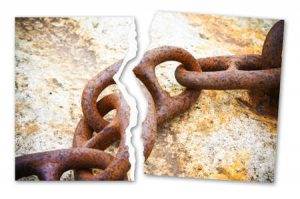 france68
france68
When a slave was drunk, the slave holder had no fear that he would plan an insurrection; no fear that he would escape to the north. It was the sober, thinking slave who was dangerous, and needed the vigilance of his master to keep him a slave. --Frederick Douglass, 1855.
Addiction is influenced by personal vulnerability, but global drug trends and their consequences to individuals and families are also influenced by larger technological, political, economic, and cultural processes. Awareness of such contextual influences and their relationship to personal recovery has been most fully articulated within American communities of color and other historically oppressed and marginalized communities.
The earliest recovery support movements in North America rose within Indian tribes whose prophetic leaders (e.g., Handsome Lake, Tenskwatawa, Kennekuk) expressed a profound understanding of the role alcohol was playing as a weapon of exploitation, colonization, and extermination. These leaders challenged the "Firewater Myths" that portrayed racial vulnerability as the source of Indian alcohol problems, and they called for the rejection of alcohol as an essential strategy for the physical survival and cultural revitalization of Indian communities. Within these religious and cultural revitalization movements, sobriety was viewed as an act of personal health and healing, an act of cultural affirmation, and an act of political resistance. The more recent emergence of the Red Road and Wellbriety movements within Indian Country marks a resurgence of such collective resistance.
Similar threads can be found within the histories of other ethnic communities, particularly within African American protest movements (e.g., Frederick Douglas, Malcolm X, and the Black Panthers). Such perspectives rising within these communities can be explained in part by the long tradition of targeting communities of color in the passage and enforcement of drug laws. The targeting of Chinese immigrants in early anti-opium laws, African Americans in anti-cocaine laws (in the 1880s-1890s and 1980s-1990s), European immigrants in early anti-heroin laws, and Mexican-Americans in early anti-marijuana laws (1930s) all confirm the roles race, ethnicity, and social class have played within the history of alcohol and other drug (AOD) problems and policies in the U.S.
Seen collectively, several themes can be drawn from this history.
- The rise of AOD problems within oppressed and socially marginalized communities is often framed by the larger society as confirmation of the inherent inferiority of minority communities. Positing the sources of AOD problems in terms of intra-personal or intra-community vulnerability further disempowers these communities and contributes to internalized shame, hopelessness, and helplessness.
- The perceived spread of AOD problems from minority to majority communities (e.g., spread of heroin from urban communities of color to predominately White suburban and rural communities) is framed as an infectious process requiring aggressive law enforcement within minority communities and expanded medical resources within majority communities. Selective law enforcement and disparities in resource allocation protect majority communities, but also serve numerous other institutional interests, including the institutional occupation and control of minority communities (e.g., by law enforcement, child welfare, and public health authorities), diversion of attention from activities of licit drug industries, and expansion of multi-billion dollar industries that profit from addiction (e.g., public and private prisons, the larger criminal justice system, the child welfare system, and the addiction treatment industry).
- Little, if any, acknowledgment is made by culturally dominant leaders of the role outside forces play in the rise, maintenance, and progressive intensification of AOD problems within minority communities. The sources of these problems are seen as rooted within these communities.
- The solutions to AOD problems within marginalized communities are portrayed as resources from outside these communities, i.e., technical experts drawn from the majority culture who reinforce dominant views on the sources of and solutions for AOD problems. The emphasis and reliance on external resources is itself a disempowering form of harm in the name of help.
- Community/cultural revitalization movements offer markedly different views of the sources and solutions to AOD problems and the larger arenas of personal, family, and community health. Recovery activists of color and leaders within other marginalized communities are seeing their own recovery as more than a process of personal healing. They are framing their recovery as a form of political protest. They are declaring:
Every drug-free breath we take is an act of defiance. We fully recognize the ways in which our addictions harmed ourselves, our families, our communities, and our people. We recognize that our addictions were enabled by and fed the power and wealth of oppressive institutions. We recognize that addiction is a chapter within our history of oppression. We now boycott theIndustries, both licit and illicit, that exploited our suffering and the suffering of our people. It is our choice today to escape this machinery of modern slavery. We refuse any longer to offer our bodies and souls as the raw materials that fuel these parasitic industries. We refuse any longer to provide a rationale for the occupation and control of our communities. Addiction drains our personal and collective strength; through recovery and by recovering together, we will regain our personal and collective power. In recovery, we will cease being controlled and will re-assert control of our lives, our families, and our communities. We cannot be fully free as individuals until we are free as a people. We now commit ourselves to that sustained process of personal and collective liberation.
Recovery can mean many things, including an act of protest--as a person and as a people.